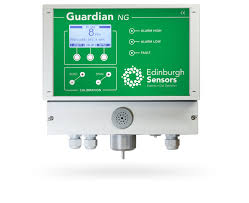In today’s world, where concerns about indoor air quality and safety are paramount, the carbon dioxide detector has emerged as a crucial device for both residential and commercial spaces. This innovative piece of technology plays a vital role in ensuring the well-being of occupants by monitoring the levels of carbon dioxide in the air.
Carbon dioxide (CO2) is a naturally occurring gas that is produced through various human activities, such as breathing, combustion, and certain industrial processes. While CO2 is not inherently toxic at normal levels, high concentrations of this gas can lead to adverse health effects, including dizziness, headaches, and even unconsciousness.
The carbon dioxide detector works by continuously measuring the concentration of CO2 in the air. When levels exceed a predefined threshold, the detector triggers an alarm to alert occupants of potential danger. This early warning system allows people to take immediate action, such as ventilating the space or evacuating if necessary.
One of the key benefits of having a carbon dioxide detector is its ability to prevent harmful exposure to high levels of CO2. In buildings with poor ventilation or high occupancy rates, CO2 levels can quickly rise to unsafe levels without detection. By installing a detector, occupants can rest assured that they will be promptly notified if conditions become hazardous.
Moreover, carbon dioxide detectors are easy to install and maintain, making them an accessible solution for both homeowners and businesses alike. With advancements in technology, modern detectors offer features such as digital displays, adjustable sensitivity settings, and long-lasting battery life for added convenience.
In conclusion, the carbon dioxide detector serves as a valuable tool in safeguarding indoor environments against potential health risks associated with elevated CO2 levels. By investing in this simple yet effective device, individuals can take proactive measures to ensure a safe and healthy living or working environment for themselves and others.
Understanding Carbon Dioxide Detectors: Usage, Differences, Necessity, and Detection Methods
- What is a carbon dioxide detector used for?
- What is the difference between carbon monoxide and carbon dioxide detectors?
- Do I need a carbon dioxide detector in my house?
- How do you detect carbon dioxide?
What is a carbon dioxide detector used for?
A carbon dioxide detector is a crucial device used to monitor and measure the levels of carbon dioxide in the air. By continuously analysing the concentration of CO2, this detector serves as an early warning system to alert occupants of potential health hazards associated with elevated CO2 levels. Whether in residential or commercial spaces, the primary purpose of a carbon dioxide detector is to ensure indoor air quality and safety by providing timely notifications when CO2 levels exceed a predefined threshold. This proactive approach enables individuals to take necessary actions, such as improving ventilation or evacuating if needed, to mitigate any risks posed by high concentrations of carbon dioxide.
What is the difference between carbon monoxide and carbon dioxide detectors?
One common query that arises when discussing carbon dioxide detectors is the distinction between carbon monoxide and carbon dioxide detectors. While both gases share the element carbon in their composition, they serve different purposes and pose distinct risks. Carbon monoxide (CO) is a colourless, odourless gas produced by incomplete combustion of fuels, such as gas, oil, or wood. Exposure to high levels of carbon monoxide can be life-threatening, leading to symptoms like headache, dizziness, and even death. On the other hand, carbon dioxide (CO2) is a naturally occurring gas that we exhale when we breathe. While not typically harmful at normal levels, excessive concentrations of CO2 can cause discomfort and health issues. Therefore, the key difference lies in the sources of these gases and their associated risks, highlighting the importance of having both types of detectors in indoor spaces for comprehensive safety.
Do I need a carbon dioxide detector in my house?
Ensuring the safety and well-being of your household is paramount, making the installation of a carbon dioxide detector a wise and proactive choice. While carbon dioxide is a naturally occurring gas, elevated levels can pose health risks, especially in poorly ventilated spaces or homes with combustion appliances. By having a carbon dioxide detector in your house, you can receive early warnings if CO2 levels exceed safe limits, allowing you to take necessary actions to protect yourself and your loved ones. Investing in a carbon dioxide detector provides peace of mind and reinforces a commitment to creating a safe indoor environment for all occupants.
How do you detect carbon dioxide?
To detect carbon dioxide, a carbon dioxide detector is commonly used. These detectors are equipped with sensors that can measure the concentration of carbon dioxide in the air. When carbon dioxide levels exceed a certain threshold, the detector triggers an alarm to alert occupants of potential danger. This early warning system enables individuals to take necessary actions, such as improving ventilation or evacuating the area if needed. Carbon dioxide detectors are essential tools for monitoring indoor air quality and ensuring the safety and well-being of occupants in residential, commercial, and industrial spaces.

